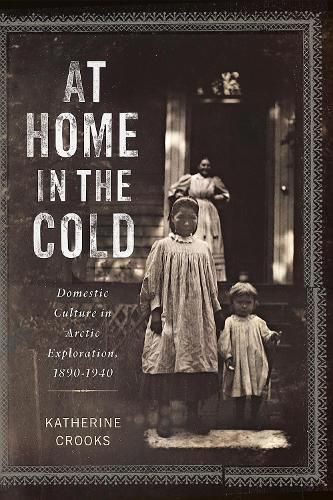Readings Newsletter
Become a Readings Member to make your shopping experience even easier.
Sign in or sign up for free!
You’re not far away from qualifying for FREE standard shipping within Australia
You’ve qualified for FREE standard shipping within Australia
The cart is loading…






In the late nineteenth and early twentieth centuries, the idea of home came into focus as a place of warmth and comfort, associated with interior spaces and feminine touches. In the same period, writing about the Arctic as a frigid and inhospitable landscape proliferated. American readers were fascinated by stories of Arctic exploration and supposedly heroic feats of survival by rugged white men. Moving across these opposing pictures were a handful of white and northern Indigenous women who travelled between the eastern Arctic and America from 1890 to 1940 in connection with exploratory expeditions. Their journeys and recollections challenged prevailing ideas about home, the North, and the rightful place of women.
At Home in the Cold brings to light the histories of five women involved in Arctic exploration. The stories of three white women explorers - Mina Hubbard, Josephine Peary, and her daughter, Marie Peary - reveal the importance of middle-class domestic ideology to understanding the history of Arctic exploration, as they sought to transform the Arctic into a more familiar environment. Their journeys are considered alongside the stories of two northern women - Eqariusaq, from Greenland, and Elizabeth Ford, born in Labrador - who travelled to the United States in connection with Arctic expeditions. They, too, made comparisons of eastern Arctic and American environments that were rooted in their experiences of the Arctic as a natural home.
Representations of the Arctic as a difficult place to live continue to dominate outsider perceptions of the North as an inferior region, with significant implications for northern residents today. At Home in the Cold considers the colonial implications of home and domestic ideology in the Arctic context.
$9.00 standard shipping within Australia
FREE standard shipping within Australia for orders over $100.00
Express & International shipping calculated at checkout
Stock availability can be subject to change without notice. We recommend calling the shop or contacting our online team to check availability of low stock items. Please see our Shopping Online page for more details.
In the late nineteenth and early twentieth centuries, the idea of home came into focus as a place of warmth and comfort, associated with interior spaces and feminine touches. In the same period, writing about the Arctic as a frigid and inhospitable landscape proliferated. American readers were fascinated by stories of Arctic exploration and supposedly heroic feats of survival by rugged white men. Moving across these opposing pictures were a handful of white and northern Indigenous women who travelled between the eastern Arctic and America from 1890 to 1940 in connection with exploratory expeditions. Their journeys and recollections challenged prevailing ideas about home, the North, and the rightful place of women.
At Home in the Cold brings to light the histories of five women involved in Arctic exploration. The stories of three white women explorers - Mina Hubbard, Josephine Peary, and her daughter, Marie Peary - reveal the importance of middle-class domestic ideology to understanding the history of Arctic exploration, as they sought to transform the Arctic into a more familiar environment. Their journeys are considered alongside the stories of two northern women - Eqariusaq, from Greenland, and Elizabeth Ford, born in Labrador - who travelled to the United States in connection with Arctic expeditions. They, too, made comparisons of eastern Arctic and American environments that were rooted in their experiences of the Arctic as a natural home.
Representations of the Arctic as a difficult place to live continue to dominate outsider perceptions of the North as an inferior region, with significant implications for northern residents today. At Home in the Cold considers the colonial implications of home and domestic ideology in the Arctic context.